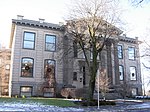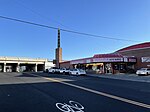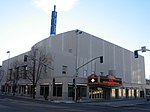San Marco (Spokane, Washington)
Buildings and structures completed in 1904Buildings and structures in Spokane, WashingtonNational Register of Historic Places in Spokane, WashingtonResidential buildings on the National Register of Historic Places in Washington (state)Washington (state) Registered Historic Place stubs ... and 1 more
Wikipedia page with obscure subdivision

The San Marco is a historic Renaissance Revival apartment building in Downtown, Spokane, Washington that was built in 1904. It was designed by architect Albert Held. San Marco was listed on the U.S. National Register of Historic Places in 1987. It is also listed on the NRHP as a contributing property in the Riverside Avenue Historic District.
Excerpt from the Wikipedia article San Marco (Spokane, Washington) (License: CC BY-SA 3.0, Authors, Images).San Marco (Spokane, Washington)
West Riverside Avenue, Spokane
Geographical coordinates (GPS) Address Nearby Places Show on map
Geographical coordinates (GPS)
| Latitude | Longitude |
|---|---|
| N 47.6575 ° | E -117.43 ° |
Address
West Riverside Avenue 1209-1225
99201 Spokane
Washington, United States
Open on Google Maps










